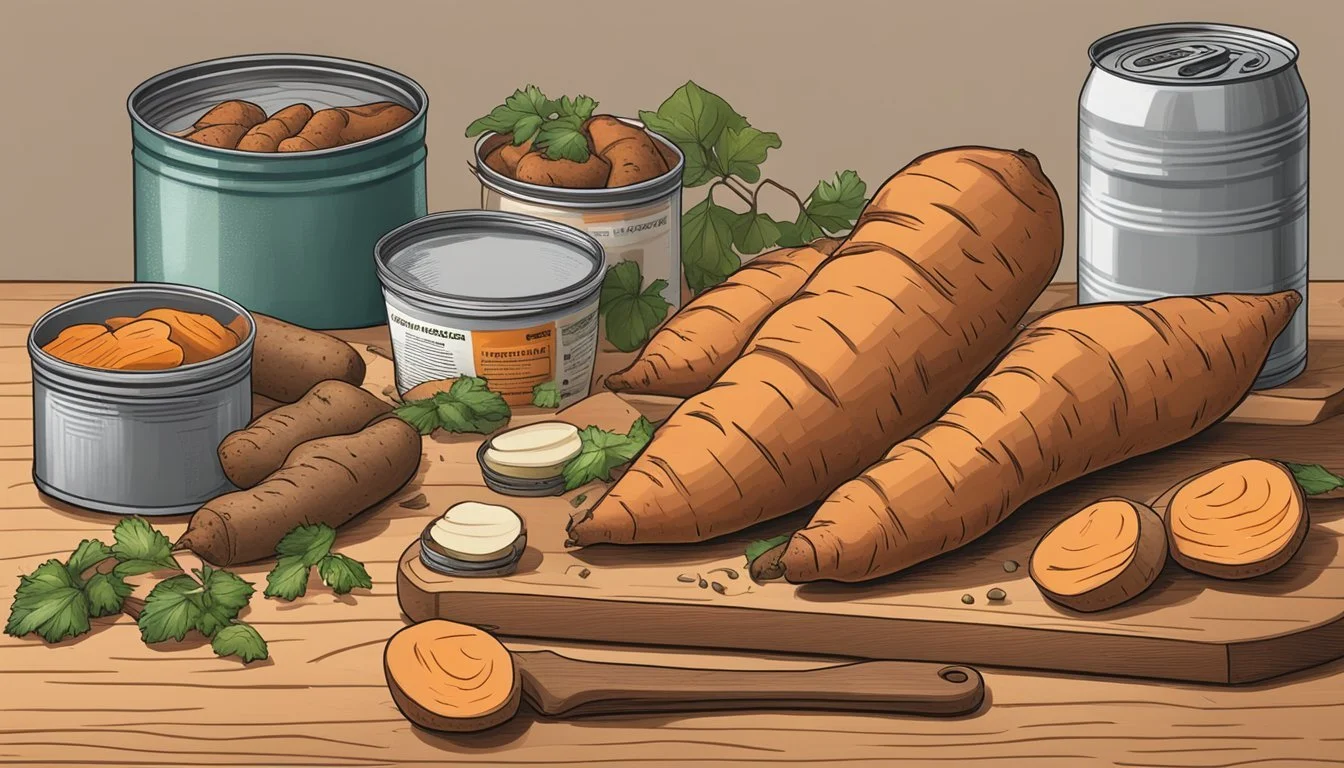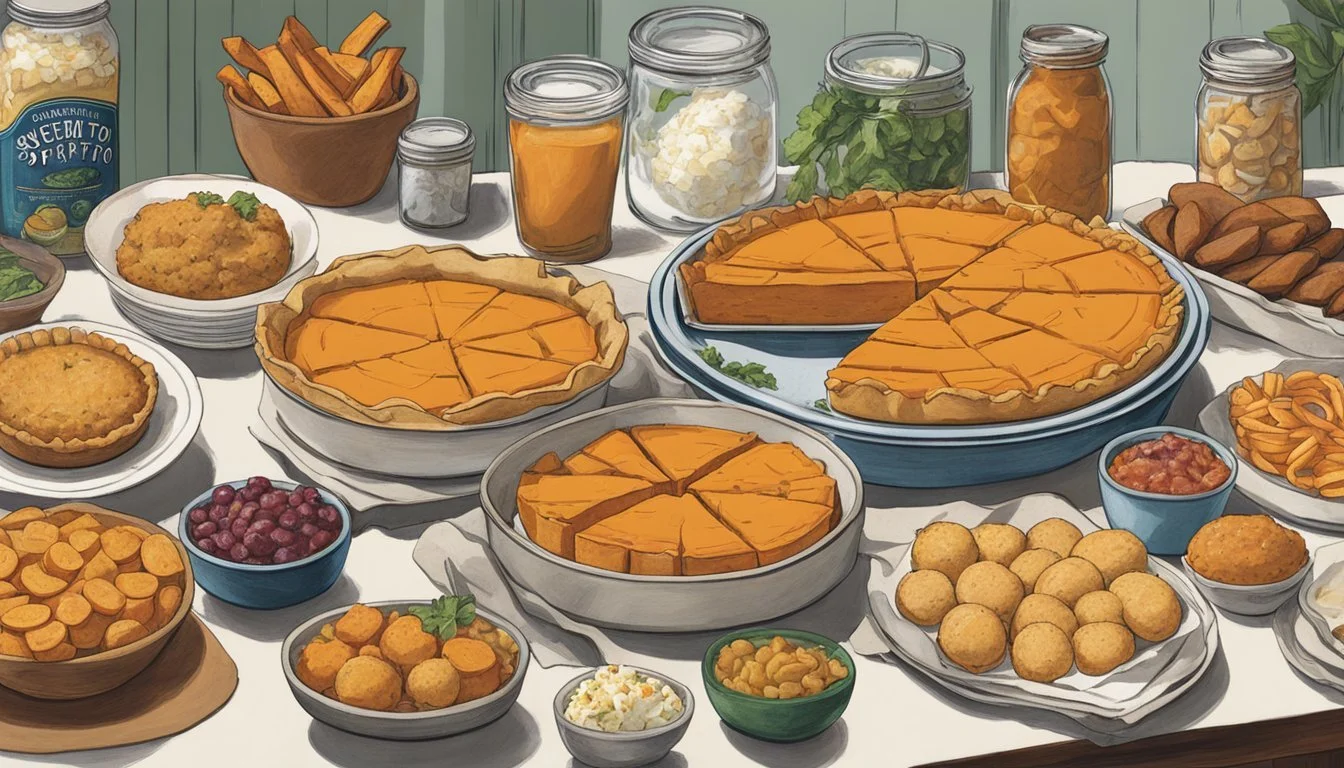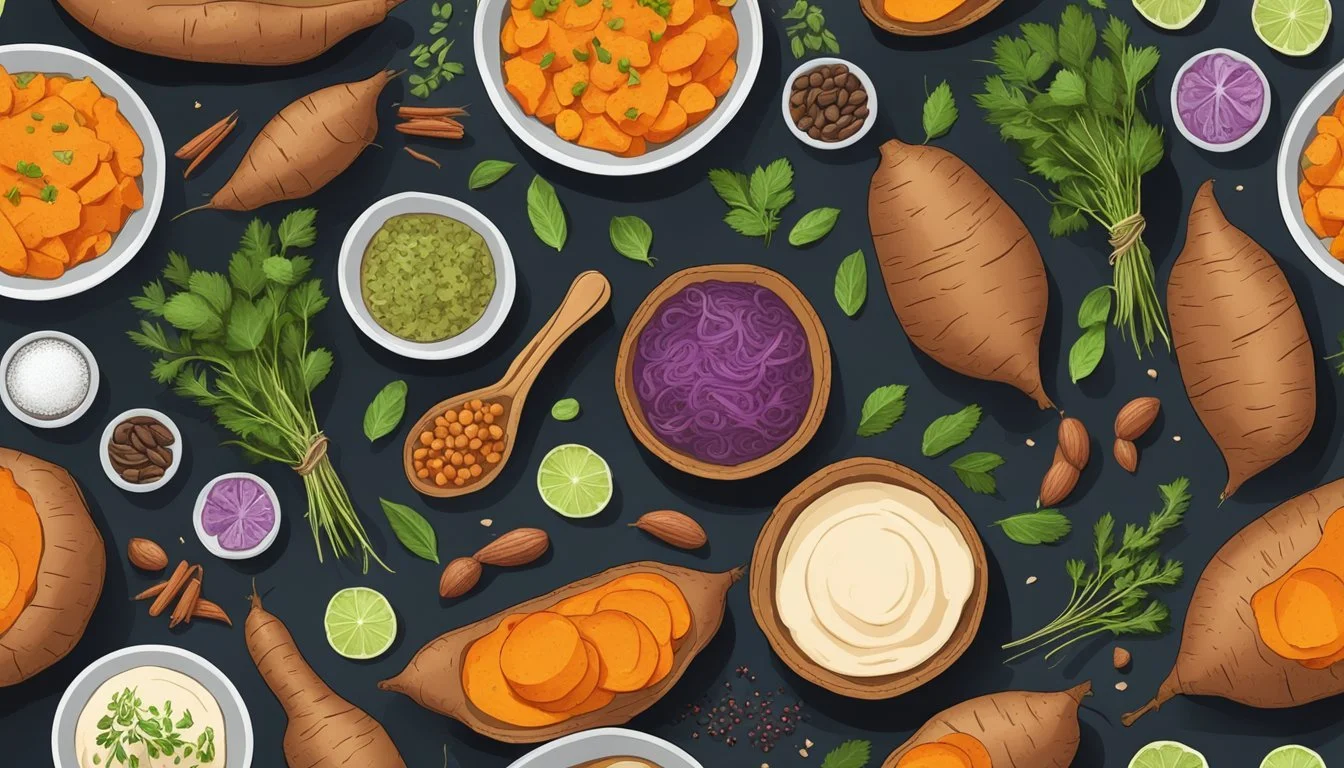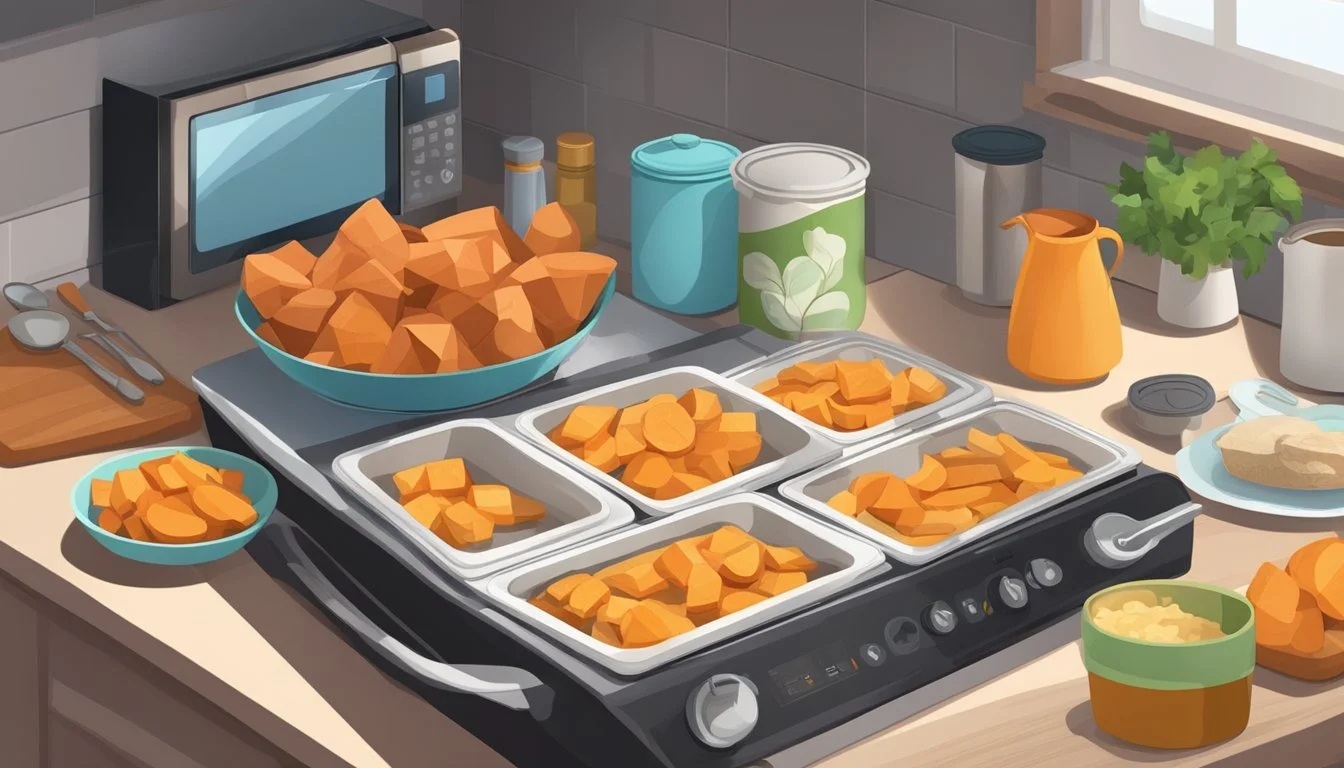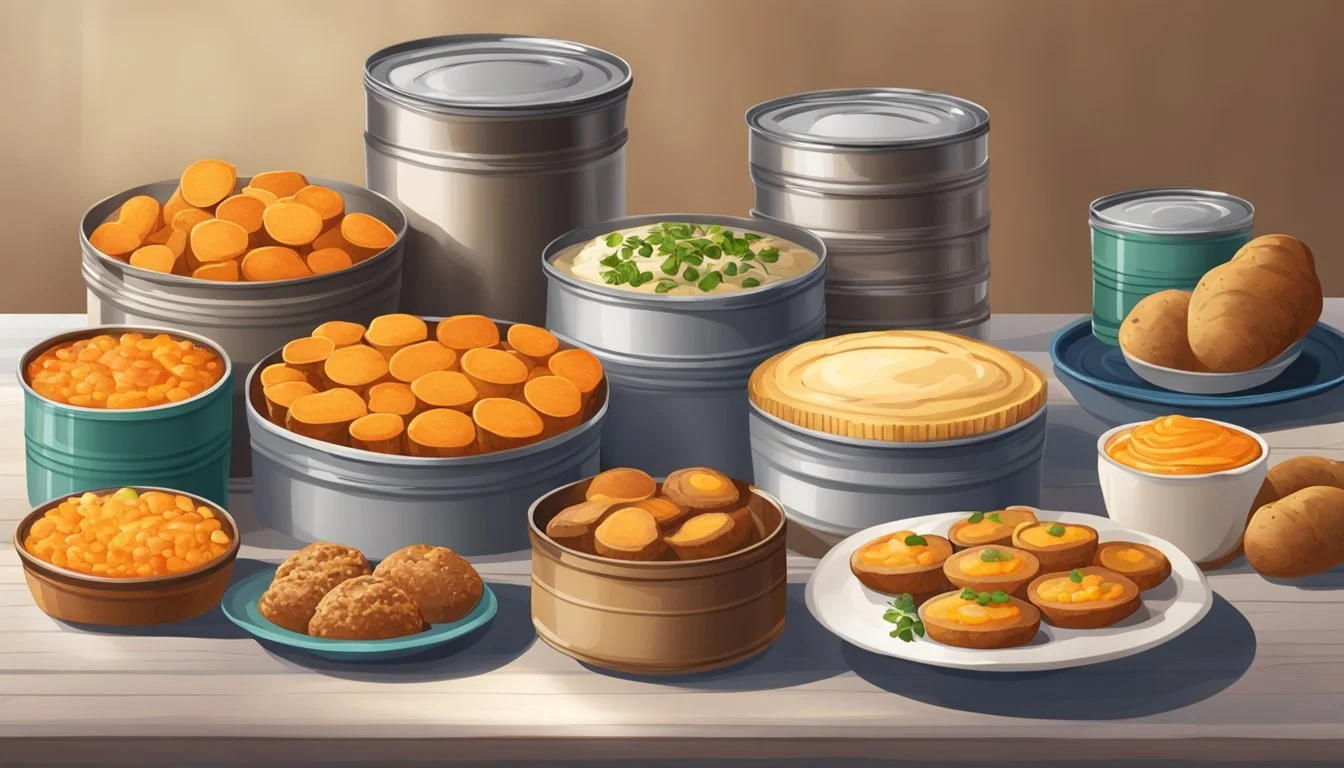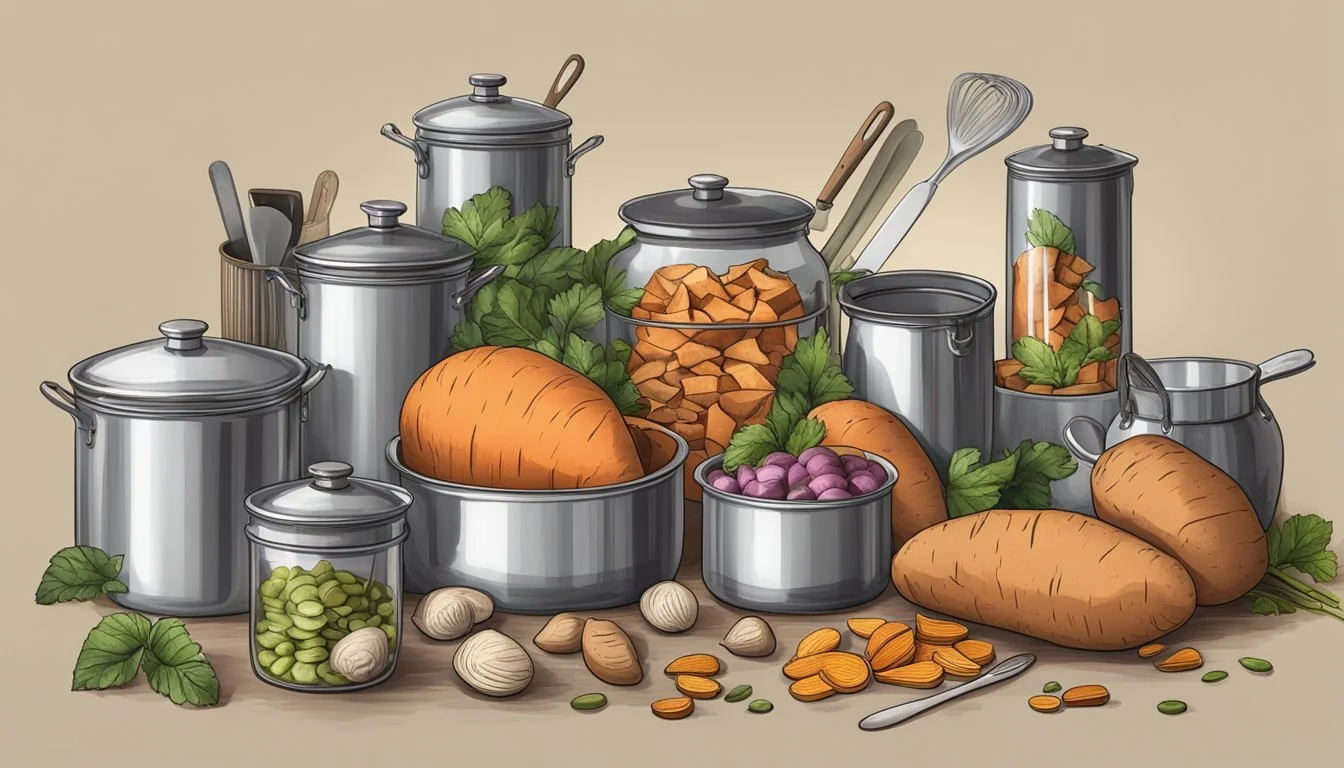Canned Sweet Potato Recipes Beyond Casserole
Creative Twists on Classic Dishes
Canned sweet potatoes (What wine goes well with potatoes?) are a versatile pantry staple that often get relegated to a single role: the classic sweet potato casserole topped with gooey marshmallows. However, there's a whole world of recipes waiting to be explored that showcase the convenience and flavor of this canned vegetable. Beyond the holiday table, canned sweet potatoes (What wine goes well with sweet potatoes?) can be utilized in a variety of dishes that cater to everyday meals as well as special occasions.
They can seamlessly transition into the realms of savory and sweet, proving their flexibility across the culinary spectrum. From smooth, spiced soups that can warm up any chilly evening to sweet potato-based desserts that offer a comforting end to a meal, the options are plentiful. These recipes provide not only convenience due to their minimal preparation time but also a welcome twist to traditional home cooking.
Offering a rich source of nutrients and an inherently sweet flavor, canned sweet potatoes can elevate the taste of numerous dishes. Enriching breakfast hashes, serving as a substitute for pumpkin in pies, or even adding a natural sweetness to smoothies, these canned goods challenge the notion that they are only fit for a once-a-year casserole dish. With a few additional ingredients and a dash of creativity, canned sweet potatoes are the hidden gem in the pantry ready to transform everyday dining.
Understanding Canned Sweet Potatoes
Canned sweet potatoes provide convenience while retaining the nutritional benefits of fresh sweet potatoes. They are a versatile ingredient suitable for a variety of recipes beyond the classic casserole.
The Basics of Canned Sweet Potatoes
Canned sweet potatoes are simply sweet potatoes that have been peeled, cooked, and sealed in a can with water or syrup. This preserves them and allows for a longer shelf life. They often come mashed or in chunks, providing a ready-to-use option for quick meal preparation. In terms of culinary use, "yams" and "canned yams" found in stores are often sweet potatoes labeled with a traditional name, although true yams are a different root vegetable entirely. The convenience of canned sweet potatoes makes them a staple for many who wish to save time without sacrificing taste or quality.
Nutritional Profile of Sweet Potatoes
Sweet potatoes are a nutritious food item packed with essential vitamins and minerals. When sweet potatoes are canned, they largely retain their nutritional value. Here is a brief overview of their nutrition profile:
Calories: Moderate in calories, they are a healthy option for energy.
Fat: They contain minimal fat, making them a heart-healthy choice.
Carbohydrates: High in carbohydrates, they provide sustained energy.
Protein: Canned sweet potatoes contain a modest amount of protein.
Fiber: They are a good source of dietary fiber, which aids in digestion.
Potassium: Contains a high level of potassium, which is vital for heart health.
Vitamins: They are an excellent source of vitamin A and have a good amount of vitamin C.
Minerals: They offer other nutrients such as calcium and iron.
Consuming canned sweet potatoes can contribute to a healthy diet due to their robust nutritional profile. They are particularly noted for their high vitamin A content, which supports eye health and immune function.
Kitchen Prep for Sweet Potato Recipes
Mastering the initial preparation of sweet potatoes is crucial for both efficiency and taste. Proper kitchen prep ensures the sweet potato's texture and flavor are optimal for a variety of recipes beyond the traditional casserole.
Pre-Cooking Techniques
Before beginning any sweet potato recipe, it's important to thoroughly wash and peel the fresh sweet potatoes. Peeling is simpler with a sturdy vegetable peeler, allowing for clean removal of the skin without wasting the flesh. Once peeled, cutting the sweet potatoes into uniform chunks—typically 1 inch in size—will aid in even cooking, whether boiling or roasting. If boiling is the chosen method, immerse the cut sweet potatoes in a pot of cold water, then bring to a boil. The cooking time will vary, typically ranging from 10 to 30 minutes depending on the size of the pieces, but they should be fork-tender once done.
Prep time: 10 minutes
Cook time (boiling): 10-30 minutes
Total time: 20-40 minutes
Making the Perfect Puree
To achieve a creamy sweet potato puree, it is crucial to properly mash the boiled sweet potatoes while they are still warm. A potato masher will usually suffice for this task, creating a rustic, slightly textured puree. For a smoother, more creamy sweet potato puree, an electric hand mixer or a food processor can be used to eliminate lumps, incorporating air and ensuring a light, whipped consistency. The pureed sweet potatoes can then be seasoned or mixed with other ingredients according to the recipe's instructions. This puree serves as a versatile base for numerous dishes, enabling cooks to expand their sweet potato repertoire with confidence.
Utensils: Potato masher or electric hand mixer
Texture: Smooth and creamy
Signature Sweet Potato Recipes
Exploring the versatility of canned sweet potatoes, these recipes showcase methods to transform this ingredient into savory meals and innovative desserts, starting with the classic casserole.
Canned Sweet Potato Casserole
The canned sweet potato casserole takes center stage in holiday feasts. It combines ease and traditional flavors, using canned sweet potatoes to reduce preparation time. After draining the sweet potatoes, one would mash them with butter, sugar, and vanilla extract for depth of flavor. A typical casserole is completed by baking the mixture in a baking dish until heated through and often topped with either marshmallows or a crunchy pecan topping for contrasting texture.
Savory Sweet Potato Dishes
Moving beyond sweet applications, canned sweet potatoes can be utilized in savory dishes. They make an excellent base for a sweet potato shepherd's pie or can be served mashed with a mix of spices like cinnamon and nutmeg, a dollop of honey, or maple syrup for a nuanced sweetness. Brown sugar and a hint of cayenne pepper can bring a satisfying balance to side dishes.
Innovative Sweet Potato Desserts
The innovation doesn't stop at the main course. Desserts like sweet potato pies or puddings infuse the natural sweetness of canned sweet potatoes. Incorporating spices, vanilla extract, and maple syrup as sweeteners, these desserts highlight the mellow sweetness of sweet potatoes. A sweet potato cheesecake, for instance, demonstrates how the vegetable can adapt to different dessert formats, providing a unique and delicious experience.
Enhancing Flavors and Toppings
When developing canned sweet potato dishes, the distinct combination of spices and sweeteners, alongside crunchy toppings, can transform a simple recipe into a memorable dish. This section will investigate the impact of these flavor enhancers and suggest ways to incorporate them into your sweet potato creations.
The Role of Spices and Sweeteners
The judicious use of spices and sweeteners can elevate the natural sweetness of canned sweet potatoes. Spices such as cinnamon, nutmeg, and allspice add warmth and depth. They are not just flavor enhancers but also contain antioxidants. Sweeteners like maple syrup and honey contribute to the distinctive sweetness of a dish while being natural options compared to processed sugars. A balance of spices and sweeteners not only augments taste but also allows control over the calories and sodium content.
Spices:
Cinnamon: Provides a warm, sweet aroma.
Nutmeg: Adds a nutty, slightly sweet flavor.
Allspice: Offers a combination of cinnamon, nutmeg, and clove notes.
Sweeteners:
Maple syrup: Imparts a rich, caramel-like sweetness with fewer calories.
Honey: Offers a natural sweetness and can help create a sticky glaze.
Crunchy Toppings and Add-ins
A crunchy contrast to the soft texture of sweet potatoes can be achieved through various toppings and add-ins. A pecan topping, often a mixture of chopped pecans, brown sugar, all-purpose flour, and buttery notes, provides a crumbly texture that complements the creaminess of mashed sweet potatoes. These elements not only contribute textural contrast but also add visual appeal and nutritional value, like healthy fats from nuts.
Toppings:
Pecans: Offer crunch and richness, elevating the dish's texture.
Crumbly Brown Sugar Mix: Creates a caramelized crust with enhanced sweetness.
Nutritional Add-ins:
Chopped pecans: While adding to the dish's flavor, they also introduce healthy fats, albeit increasing calories and cholesterol.
With these enhancements, canned sweet potatoes can be transformed from a simple side to the star of the dining table.
Tips for Perfect Consistency and Texture
Achieving the right consistency and texture in canned sweet potato recipes is crucial for delicious outcomes. Careful selection of ingredients and techniques can prevent common pitfalls like sogginess or overly dense textures.
Achieving Creaminess and Avoiding Sogginess
Creaminess is a hallmark of a well-prepared sweet potato dish. To attain this:
Mash the sweet potatoes until they have no lumps, using a potato masher or hand mixer.
Incorporate butter for richness; a ratio of 2 tablespoons per cup of mashed sweet potatoes tends to work well.
Add milk incrementally, only to the point where the mashed sweet potatoes are creamy but not watery. Usually, adding 1/4 cup of milk for every 2 cups of mashed sweet potatoes is sufficient.
To prevent soggy textures:
Drain the canned sweet potatoes thoroughly before mashing to eliminate excess moisture.
One or two eggs can be mixed in to bind the ingredients, helping to firm up the consistency upon cooking.
Selecting the Right Sweet Potato Variety
The variety of sweet potato used can influence texture:
For a creamy texture, choose canned sweet potatoes that are labeled as "yams"—often these are softer varieties working well for smooth dishes.
To achieve a balance between creamy and crunchy:
Incorporate ingredients like chopped nuts or a crumble topping to deliver a contrast to the creamy base.
The user should avoid mixing in too much flour, which can lead to a gummy texture. Instead, they can use it sparingly as a thickener if the mixture is too runny.
Storing and Reheating Your Dishes
Ensuring that your canned sweet potato creations maintain their quality during storage and reheating is crucial for enjoying leftovers. Here's how one can tackle storage in the refrigerator and the freezer, along with effective reheating tips.
Preserving Freshness in the Refrigerator
To keep sweet potato dishes fresh in the refrigerator, one should follow these steps:
Cooling: Always allow the dish to cool to room temperature before storing to prevent moisture buildup.
Airtight Containers: Transfer leftovers to airtight containers to keep air out and prevent contamination.
Refrigeration Time: Refrigerate promptly – sweet potato dishes can be stored in the refrigerator for 3 to 5 days.
Freezing and Reheating Tips
When freezing and reheating sweet potato dishes, one must consider these guidelines for optimal results:
Freezing:
For make-ahead convenience, divide the dish into serving sizes before freezing.
Wrap each portion tightly with plastic wrap or aluminum foil.
Label and date containers or bags; sweet potato dishes can be frozen for up to 12 months.
Reheating:
To reheat, thaw in the refrigerator if frozen and remove any wrappings.
For microwave reheating, cover the dish and use a lower power setting, stirring occasionally for even heat distribution.
In the oven, reheat at 350°F, covering the dish with foil to prevent drying.
By adhering to these storage and reheating protocols, one will enjoy sweet potato dishes that are as delightful as when first prepared.
Seasonal Sweet Potato Dishes
Canned sweet potatoes provide a convenient and versatile ingredient for creating comforting dishes to celebrate the seasons. Each dish reflects time-honored traditions or offers a twist on the classics, ensuring that every meal is both memorable and delightful.
Thanksgiving and Holiday Recipes
Thanksgiving and the broader holiday season call for recipes that honor tradition while providing a taste of the familiar and festive. A classic Canned Sweet Potato Casserole is a staple side dish. For this, one combines mashed sweet potatoes with butter, sugar, and spices, topping it with a generous sprinkle of marshmallows or a crunchy pecan streusel before baking until golden.
Ingredient Thanksgiving Casserole Holiday Variation Canned Sweet Potatoes Base for the casserole Mix with apples for a seasonal take Toppings Marshmallows or pecans Pair with pumpkin pie spice Spices Cinnamon, nutmeg Add ginger for extra warmth
Equally crucial on the dinner table is an alternative to pumpkin pie: a Sweet Potato Pie, blending the smooth texture of sweet potatoes with the warm autumnal spices and a buttery crust. These desserts and side dishes help define the season's spread.
Year-Round Sweet Potato Favorites
Despite their association with holidays, canned sweet potatoes can transform into year-round favorites. One might create a Green Bean and Sweet Potato Casserole by mixing tender green beans and sweet potatoes with a creamy sauce, enveloped under a crispy fried onion topping—a twist on the traditional green bean casserole.
Quick and sumptuous meal additions include:
Sweet Potato Biscuits: Add pureed sweet potatoes to biscuit dough for a moist and slightly sweet bread option.
Sweet Potato Hash: Sauteed with onions and peppers for a hearty breakfast or brunch side.
These dishes break the seasonal mold, offering comforting and versatile options for any day of the year.
Best Practices for Baking Sweet Potato Dishes
When baking sweet potato dishes beyond the traditional casserole, paying attention to oven temperatures, cooking times, and the cookware used, can make a significant difference in the outcome. Proper techniques ensure that the sweet potatoes maintain their nutritional value while providing that comforting taste with efficiency.
Oven Temperatures and Cooking Times
For sweet potato dishes, the oven temperature should typically range from 350°F to 400°F. A moderate temperature like 375°F is often used because it allows the insides of the sweet potatoes to cook through without burning the exterior. Cooking times vary:
Cubed sweet potatoes: about 30 to 45 minutes
Whole sweet potatoes: 45 minutes to 1 hour
To prevent under or overcooking, utilize a fork to check the tenderness of the sweet potatoes.
Utilizing Cooking Sprays and Dishes
Before placing sweet potatoes in the oven, lightly coat the baking dish with cooking spray. This prevents sticking and aids in easy cleanup. Choose a baking dish that allows heat to circulate evenly:
For faster cooking times: use a shallow dish
For comforting, deeper dishes: a deeper, casserole-type dish may be used
Additionally, using aluminum foil can speed up cooking times and help in retaining moisture. Always ensure that the baking dish is oven-safe to prevent any mishaps during the baking process.
Conclusion
Canned sweet potatoes provide a convenient and versatile base for an array of dishes beyond the traditional casserole. Whether one opts for a sweet dessert or a savory side dish, the ease of using pre-cooked sweet potatoes from a can allows for creativity and efficiency in the kitchen.
They can be transformed into comforting candied yams or whipped into a smooth pie filling. By incorporating these sweet potatoes, chefs can save time without compromising on taste. Mash them for a quick side, or slice for a layered gratin. The addition of spices, nuts, and marshmallows can give these dishes a festive flair suitable for holiday meals (What wine goes well with holiday meals?) or everyday enjoyment.
In exploring these recipes, cooks should remember:
Drain the can: Remove excess liquid to ensure the right consistency.
Enhance flavors: Brown sugar, vanilla, cinnamon, and nutmeg pair well with sweet potatoes.
Add texture: Pecans or walnuts provide a satisfying crunch.
By using these staples, one can expand their culinary repertoire with minimal effort. The pre-cooked nature of canned sweet potatoes is a boon to time-constrained cooks, making it easier to focus on flavor and presentation. Remember, experimentation is key to discovering new favorite dishes.


